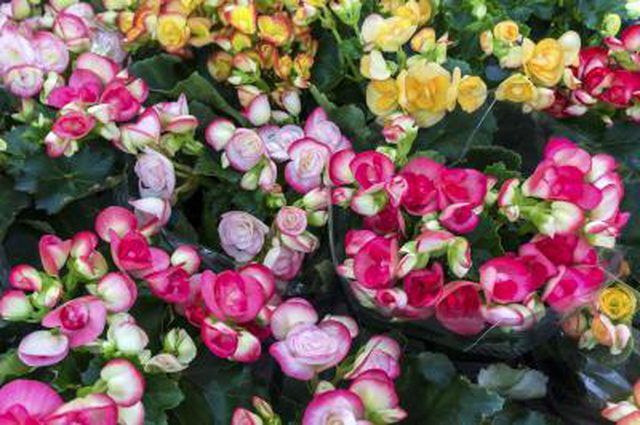Bulbs
Flower Basics
Flower Beds & Specialty Gardens
Flower Garden
Garden Furniture
Garden Gnomes
Garden Seeds
Garden Sheds
Garden Statues
Garden Tools & Supplies
Gardening Basics
Green & Organic
Groundcovers & Vines
Growing Annuals
Growing Basil
Growing Beans
Growing Berries
Growing Blueberries
Growing Cactus
Growing Corn
Growing Cotton
Growing Edibles
Growing Flowers
Growing Garlic
Growing Grapes
Growing Grass
Growing Herbs
Growing Jasmine
Growing Mint
Growing Mushrooms
Orchids
Growing Peanuts
Growing Perennials
Growing Plants
Growing Rosemary
Growing Roses
Growing Strawberries
Growing Sunflowers
Growing Thyme
Growing Tomatoes
Growing Tulips
Growing Vegetables
Herb Basics
Herb Garden
Indoor Growing
Landscaping Basics
Landscaping Patios
Landscaping Plants
Landscaping Shrubs
Landscaping Trees
Landscaping Walks & Pathways
Lawn Basics
Lawn Maintenance
Lawn Mowers
Lawn Ornaments
Lawn Planting
Lawn Tools
Outdoor Growing
Overall Landscape Planning
Pests, Weeds & Problems
Plant Basics
Rock Garden
Rose Garden
Shrubs
Soil
Specialty Gardens
Trees
Vegetable Garden
Yard Maintenance
Do Begonias Need Sun or Shade?
Do Begonias Need Sun or Shade?. For many common garden flowers, beautiful blossoms depend on abundant doses of summer sun. Not to be outdone, begonias (Begonia spp.) offer dazzling blooms from sunny borders to shady corners -- with some begonias grown solely for their striking foliage. Common begonia groups all flourish in part-shade locations,...

For many common garden flowers, beautiful blossoms depend on abundant doses of summer sun. Not to be outdone, begonias (Begonia spp.) offer dazzling blooms from sunny borders to shady corners -- with some begonias grown solely for their striking foliage. Common begonia groups all flourish in part-shade locations, receiving 4 to 6 hours of daily shade, but some begonias swing toward sun or shade more easily than others.
Fibrous Begonias
A favorite bedding plant for annual borders, fibrous begonias (Begonia semperflorens-cultorum) flower abundantly from spring through frost. Also known as wax begonias, these tender perennials tolerate full sun to part shade. Six to eight hours of sun is acceptable, provided wax begonias get relief from the day's hottest rays. Morning sun and late-afternoon sun are fine. Usually grown as an annual, wax begonias are hardy from U.S. Department of Agriculture plant hardiness zones 10 through 11. Consistent soil moisture is important, especially when grown in sunny areas. Their thick, waxy foliage comes in green and bronze. Bronze leaves tolerate more sun than green ones.
Tuberous Begonias
Brilliant blossoms that light up part-shade locations are typical of tuberous begonias (Begonia tuberhybrida). The striking blooms shine in bright, vibrant colors from summer through fall. Tuberous begonias do best in filtered shade or shaded areas that receive bright indirect light. Balance is important. Too little sun brings few blooms, but too much sun burns tender flowers and foliage. These tender tubers are hardy in USDA zones 9 through 11, and prefer cool summers over heat and humidity. Keep soil consistently moist, but well drained. Avoid overwatering or tubers may rot. The 1 1/2-foot stems fill hanging baskets beautifully and do well overwintering indoors.
Rex Begonias
Prized for their colorful, stunning foliage, rex begonias (Begonia rex-cultorum) prefer more shade than other begonias and thrive in part- to full-shade situations. Hardy in USDA zones 10 to 12, the tender perennials do well with 4 to 6 hours of shade or more. Very early morning sun or bright indirect light is acceptable. Their inconspicuous blooms pale beside foliage in shades of silver, green, lavender, red, pink and deep maroon. Rex begonias prefer high humidity and very porous, well-drained soil. Let the soil dry to the touch before watering. The 1- to 1.5-foot plants excel indoors. Turn them regularly to keep growth well rounded.
Hardy Begonias
Beyond houseplants and annual borders, hardy begonias (Begonia grandis) and their hybrids take their place in shaded landscapes in USDA zones 6 and 7. Partnered with hostas and other shade-loving plants, hardy begonias prefer part to full shade. They even tolerate heavy-shade areas that receive little direct light. Growing 2 feet or more in height and width, hardy begonias bloom from mid-summer through fall. Keep their soil moist to wet, and never let them dry out. Their large, heart-shaped leaves are often blue-green above, with red and burgundy undersides that flash their color when summer breezes pass by.